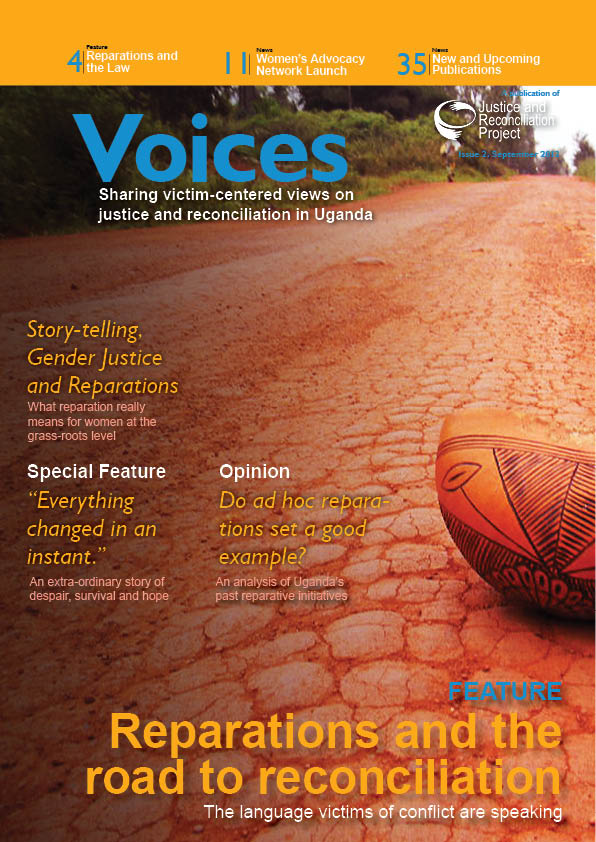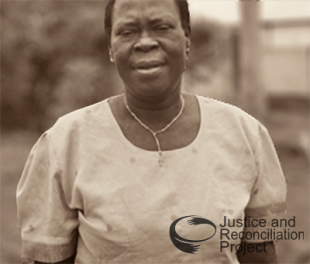Is the Government setting a good legacy for a reparations process in Uganda?
By Sylvia Opinia
On 11th July 1989, the National Resistance Army (NRA) allegedly rounded up men who were suspected of being rebel collaborators against the then newly formed government and closed them in a train wagon where 69 suffocated to death while 47 survived. Afterwards, the Government convened a military court martial to try the perpetrators and in 1994 delivered the first part of compensation to the families of those who died. By 2001, a mass grave and Mukura Memorial Senior Secondary School were constructed. In October 2010, a sum of 200 million Uganda shillings was delivered by the President of Uganda, Yoweri Museveni, during a public gathering, handed to the then Woman Member of Parliament, and a building intended to house a public library was completed. Media reports indicate that the President publicly apologised to the community in Mukura on behalf of the NRA soldiers.
In a separate incident, during the height of the LRA conflict in Northern Uganda, the Uganda Peoples Defence Force (UPDF), mistaking them for LRA rebels, accidentally killed six fishermen at River Aringa in Mucwini Sub County, Kitgum District. In 2011, handled by the office of the Resident District Commissioner, after consultation meetings with the affected families and elders, the families were paid an equivalent of two million shillings.
In yet another incidence of ad hoc government compensation, immediately after the heinous bomb attacks of 11th July 2010 on world cup football fans at the Kyandondo Rugby Club and the Ethiopian Restaurant in Kampala, the government paid five million and three million shillings respectively to the families of those who were injured and those who died on that day.
This year on the 20th of April, during the 17th annual commemoration prayers for the 1995 Attiak massacre by the LRA, President Museveni gave Attiak Massacre Survivors Association a cash contribution of one million shillings and pledged 50 million shillings which he said was not part of the compensation but his personal contribution.
While the above and other attempts to repair harms committed to civilians by the government are well lwonder whether the government is setting a good legacy for the reparations process in Uganda. It can be argued that the Government only acknowledges and takes responsibility for crimes committed by its soldiers as is the case of Mukura and Mucwini. According to the UN Basic Principles and Guidelines on the Right to a Remedy and Reparations all victims regardless of whether the violations are by the state or non state actors, have a right to adequate, effective and prompt reparation for harms suffered and places the primary obligation upon the state to provide reparations.
Looking closely at the circumstances surrounding these and other similar initiatives, it is questionable as to whether they meet the central principles guiding reparations. The UN Guidelines outline some of the principles central to any reparations programme such as acknowledgement including full facts of factors surrounding the incident and acceptance of responsibility and guarantees of non repetition among others.
Since such initiatives tend to lack community consultations, apart from Mucwini, an assessment of victims needs to make them victim centered. While it is true that victims across the region in one way or the other are demanding reparations for the crimes that have been committed to them, their needs vary. For instance, in West Nile the majority of the population that was affected by LRA conflict were active as businessmen, civil servants, students etc., as opposed to Acholi, Lango or Teso where victims were varied as a result of indiscriminate attacks. It would therefore be important to consult and assess the different reparations and therefore justice needs.
It is also important for reparations programmes to be linked to other transitional justice mechanisms, such the as International Crimes Division, truth telling, traditional justice initiatives among others, in order for victims to feel that justice has been achieved. In Mukura, during a community theatre performance, the survivors and families of the victims called for reconciliation with the perpetrators through traditional ceremonies.
As the current transitional justice discourse among communities is dominated by the debate on reparations, I therefore want to reiterate JRPs position for a victim led process for a comprehensive policy based on assessment of needs to determine victimhood, and implemented through an independent body in order to reach its intended beneficiaries. This will ensure that victims of gross human rights violations are subjected to similar processes and procedures.▪


